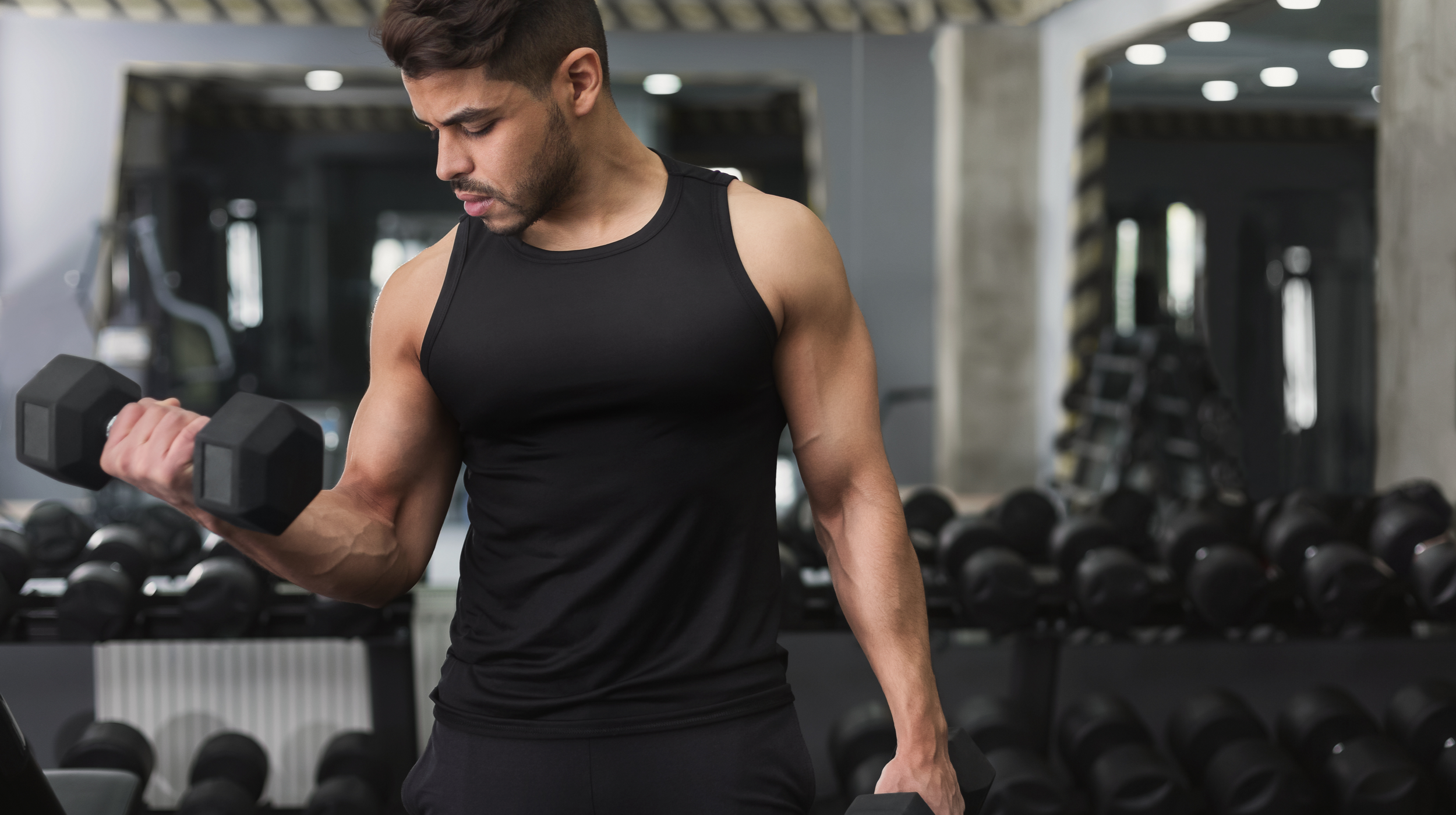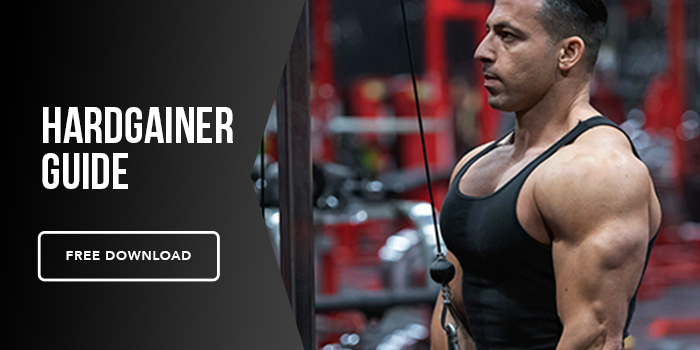Resistance training can be a very overwhelming process for people who are just starting out. There are many workouts to choose from, and ways to go about it. Instead of giving you one sample workout, I’d rather equip you with the tools to know how to build an appropriate workout for YOUR body.
Frequency
In order to grow we need to send a signal to the body that tells that particular muscle to grow, otherwise nothing will obviously happen. The natural lifter can only create that signal by placing a load on the muscle. That signal is maximized after a workout but normally comes back down after 24-48 hours back to baseline. If we know this, then we know ideally we want this signal elevated back up after 48 hours so that the body is continually being told to grow.
Do This: Spread your volume out, and hit the muscle more frequently throughout the week to create that signal. If you only did a chest day, then you’re spending the rest of the week with no (or a very weak) signal towards that muscle.
Intensity
When you workout with more weight than you did the week before, or for extra reps, you are sending that signal to grow as well. We have a minimum recoverable volume (least amount of total sets per muscle to stimulate growth), and maximum recoverable volume (maximum amount of total sets per muscle before you can’t recover properly and hurt your gains). It is within this range that we individually all have a unique amount of sets it takes to create enough stress for a particular muscle to grow.
Beginners - 8-10 weekly sets
Intermediates - 12-15 sets
Advanced - 15+ sets
Do This: Since you are a beginner, don’t go past 10 weekly sets. You won’t get “extra growth” because you did more work. Instead, you only risk having overtrained your body so it isn’t able to recover in time for the next session. It ultimately takes time and self experimentation in the gym to figure out what the optimal range is for you.
Over the course of a 4-6 week training block, try and do better than last week by adding a rep or adding weight. By the final week or two, you should find yourself making little to no progress since you’ve built up your maximum recoverable volume. You’d take a deload week, and allow your body to catch up to the weeks of volume you’ve built up to, allowing what's known as a supercompensation effect to take place and reap the muscle growth.
Note: Every set you should be working at an RIR (reps in reserve) of 2-3. That essentially means every set should be taken until you only have 2-3 more reps until your form crumbles. This ensures you are pushing it hard enough, but not so hard you couldn’t recover from it.
Tracking
This is also why you should be TRACKING your workouts. If you are new to this, then you don’t have the luxury of winging your workouts. It’ll hold you accountable to making sure you are improving on some aspect of your workout whether its sets, weight, or reps. What gets measured gets improved!
Progression
Linear Progression (better for lifters < 3+ years proper lifting) - Each week lower the rep by 1-2 and increase the weight 2.5-5lbs.
Week 1 - Bench Press 3x10 with 135lbs
Week 2 - Bench Press 3x8 with 140lbs
Week 3 - Bench Press 3x6 with 145lbs
Double Progression (better for lifters > 3-4+ years) - Take a set rep range for a given exercise, and each week try and increase the reps until all sets hit the upper limit. Allows for continued progress when you can’t continually up the weight by 5lbs every week of linear method.
Week 1 - Bench Press 3x10-12 with 135lbs (let's say you hit 12,11,10 reps for each set)
Week 2 - Bench Press 3x10-12 with 135lbs (12,12,11)
Week 3 - Bench Press 3x10-12 with 135lbs (12,12,12)
At this point since you’ve hit all sets for the upper end, you can now up to 140 and repeat the cycle till you hit all sets for 12 reps again.
Sample Programming Routine
Frequency: Should be trying to stimulate the chest 2-3 times a week, to maximize the muscle building signal that a weightlifting exercise creates on that particular muscle. Every 4-6 weeks, you could change up the exercise if you find you are no longer making progress, not feeling it work the muscle, or need to mix it up.
Intensity (Sets/Reps):
10-12 total sets for the week split up evenly among your 2-3 workouts that include chest.
Every 3-4 weeks you should be changing the rep scheme or going up in weight, to create a newer stimulus that’ll help further progression as you get more comfortable with a lift and weights start increasing less and less per week.
Weeks 1-4 - 6-8 reps (more of an intensity phase focused on strength)
Note: You can go higher rep for the more isolated movements as they probably don’t need to be in such a low rep range and could cause a bigger injury risk.
Weeks 5-8 - 10-12 reps
Weeks 9-12 - 12-15 reps (more of an accumulative phase focused on volume)
Make sure to include a deload week in between each 4 week block
Progression: Try to use linear progression for compound lifts, and double progression for more isolated lifts.
That’s all there is to it! Feel free to save this article, and continually come back to it as a guide throughout your lifting journey, to make sure you are setting yourself up for success. Also, if this is still a little too overwhelming, check out our MAPS Anabolic program which is perfect for beginners looking to get into lifting. It takes everything I just wrote, and does it for you which makes it easier to follow.






